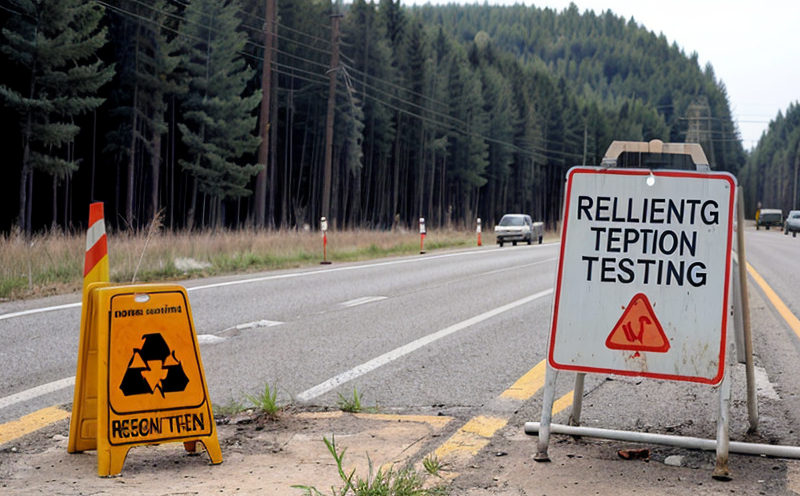ASTM D7284 Radiological Analysis of Uranium in Soil
The ASTM D7284 radiological analysis of uranium in soil is a critical method used to assess environmental contamination and compliance with regulatory standards. This test aims at providing precise quantification of uranium isotopes present in soil samples, ensuring the safety of human health and ecosystems.
Uranium, particularly as U(IV) or U(VI), can be found naturally in soil but may also originate from anthropogenic sources such as mining operations, nuclear facilities, or waste disposal sites. The presence of uranium in excess levels poses risks to both terrestrial organisms and human populations that come into contact with the contaminated soil through inhalation, ingestion, or dermal exposure.
The ASTM D7284 protocol specifies a method for determining total uranium (uranium-234, uranium-235, and uranium-236) in soil by using high-resolution alpha spectrometry. This technique allows for accurate measurement of uranium isotopes down to the parts-per-billion level, which is essential for reliable contamination assessment.
For specimen preparation, collected soil samples must be air-dried if not already dry, sieved through a 2 mm mesh size, and then homogenized thoroughly before being stored in sealed containers. The amount of sample required depends on the expected concentration levels; typically, several grams are needed for accurate analysis.
The test apparatus includes high-resolution alpha spectrometers capable of detecting low-level emissions from uranium isotopes. These instruments utilize semiconductor detectors that convert ionizing radiation into electrical signals, allowing precise quantification.
Acceptance criteria dictate that results must be reported within specified limits set forth by relevant regulations or company policies. Typically, these limits are defined based on health-based guidelines such as those provided in the U.S. Environmental Protection Agency's (EPA) Radionuclide Standards for Drinking Water or analogous international standards like ISO 17025.
To ensure accurate results and reliable data interpretation, it is crucial to follow strict quality control measures during every step of the process—from sample collection through final reporting. This includes validating analytical methods against known reference materials and maintaining calibration traceability throughout the measurement chain.
Understanding how this test impacts various stakeholders can provide valuable insights into its significance. For instance, environmental scientists rely on accurate uranium concentrations to monitor remediation progress at contaminated sites. Similarly, public health officials depend on such data when establishing safety zones around nuclear facilities or other potential sources of radiation exposure.
In summary, the ASTM D7284 radiological analysis of uranium in soil plays a vital role in safeguarding environmental quality and public health by providing quantitative insights into radioactive contaminations. By adhering to rigorous procedures and using advanced instrumentation, laboratories like ours deliver reliable results that meet stringent standards and support informed decision-making processes.
Why Choose This Test
Selecting the appropriate analytical technique is crucial when addressing specific environmental issues related to radioactive contamination. Here are some key reasons why choosing ASTM D7284 for uranium analysis in soil offers distinct advantages:
- Precision and Accuracy: High-resolution alpha spectrometry allows for highly accurate quantification of uranium isotopes down to parts-per-billion levels.
- Regulatory Compliance: Results generated from this method align with internationally recognized standards such as EPA Radionuclide Standards for Drinking Water and ISO 17025, ensuring compliance with relevant regulations.
- Versatility: The protocol can be adapted to various sample types beyond just soil, making it versatile across different applications within the broader field of environmental radiation testing.
- Rigorous Quality Control: Strict adherence to quality assurance protocols guarantees consistent and reliable outcomes every time.
- Expertise and Experience: Our team comprises experienced professionals who possess deep knowledge about this particular technique, ensuring optimal performance during each analysis.
- State-of-the-Art Infrastructure: Equipped with cutting-edge equipment like high-resolution alpha spectrometers, we provide robust support for accurate measurements.
- Comprehensive Reporting: Detailed reports that include raw data and interpretations help stakeholders make informed decisions confidently.
By leveraging these benefits, organizations can enhance their understanding of radioactive contaminations effectively and efficiently. Choosing ASTM D7284 ensures not only compliance with current regulatory requirements but also contributes to long-term sustainability efforts by providing essential information for effective management strategies.
Customer Impact and Satisfaction
- Improved Decision-Making: Accurate data from ASTM D7284 helps customers make informed decisions regarding site management, risk assessment, and compliance activities.
- Enhanced Reputation: Demonstrating commitment to environmental protection through reliable testing fosters trust among stakeholders and enhances overall reputation.
- Cost Efficiency: Early detection of issues allows for targeted interventions rather than broader, more expensive cleanup efforts later on.
- Regulatory Compliance: Providing results that align with international standards ensures clients are meeting legal requirements without facing penalties or delays.
We strive to exceed expectations by offering exceptional service and support throughout the entire testing process. Our goal is not only to provide accurate results but also to assist customers in achieving their broader goals related to environmental stewardship and regulatory compliance.
Environmental and Sustainability Contributions
The ASTM D7284 radiological analysis of uranium in soil plays a significant role in promoting environmental sustainability by providing critical information for managing radioactive contamination effectively. Here’s how this service contributes:
- Pollution Prevention: By identifying areas where uranium concentrations exceed safe thresholds early, organizations can implement preventive measures to avoid further spread or escalation of contamination.
- Resource Conservation: Targeted remediation efforts based on accurate data help conserve resources by focusing intervention precisely where needed instead of conducting wide-area cleanups unnecessarily.
- Biodiversity Preservation: Protecting soil ecosystems from radioactive pollution supports the maintenance and enhancement of biodiversity, which is crucial for ecosystem services such as pollination and nutrient cycling.
- Hazard Mitigation: Early detection allows for rapid response to minimize health risks associated with exposure to high levels of radiation.
In conclusion, ASTM D7284 serves as a cornerstone in sustainable environmental management practices by offering reliable data that supports informed decision-making aimed at protecting public health and preserving natural resources.





